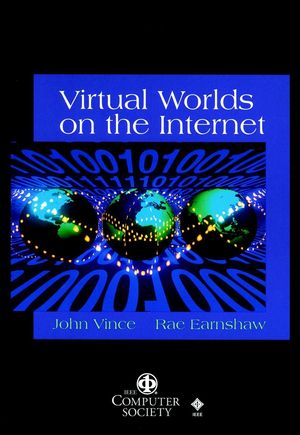Virtual Worlds on the InternetISBN: 978-0-8186-8700-6
Paperback
360 pages
January 1999, Wiley-IEEE Computer Society Press
 This is a Print-on-Demand title. It will be printed specifically to fill your order. Please allow an additional 15-20 days delivery time. The book is not returnable.
|
||||||
In recent years, computer graphics has evolved into four major
disciplines: computer animation, image processing, visualization,
and virtual reality. Now these technologies are converging into one
seamless digital medium resulting in various tools that will
transform the way we work in the next century.
Virtual Worlds on the Internet examines how the latest developments in virtual environments, computer animation, communication networks, and the Internet are being configured to create revolutionary tools and systems. Vince and Earnshaw have selected twenty papers they believe will influence computer systems of the twenty-first century.
The topics discussed in this book include:
* A toolkit for the development of virtual environment applications for education and research
* Behavior descriptions used in expansive virtual environments.
* Different uses of VRML in information system interfaces.
* An examination of research in virtual reality environment interfaces.
* Five approaches to supporting changes in virtual environments.
* How ATM networks can support multi-user 3D virtual environments.
* The transmission of vector graphics and animations over narrow-band transmission channels.
* An exploration of an implicit modeling system including an interactive editor for building models.
* A description of the advantages of 3D environments for shopping applications on the Internet.
* The prototype of a software tool that automatically generates 3D models of virtual supermarkets.
* A "VR Workbench" that displays strategic information viewable by a user groups.
* An overview of a VR display system describing its workbench technology and its applications.
* How to separate the functionality of a multi-user 3D modeling system into functional tools with interface specifications.
Virtual Worlds on the Internet examines how the latest developments in virtual environments, computer animation, communication networks, and the Internet are being configured to create revolutionary tools and systems. Vince and Earnshaw have selected twenty papers they believe will influence computer systems of the twenty-first century.
The topics discussed in this book include:
* A toolkit for the development of virtual environment applications for education and research
* Behavior descriptions used in expansive virtual environments.
* Different uses of VRML in information system interfaces.
* An examination of research in virtual reality environment interfaces.
* Five approaches to supporting changes in virtual environments.
* How ATM networks can support multi-user 3D virtual environments.
* The transmission of vector graphics and animations over narrow-band transmission channels.
* An exploration of an implicit modeling system including an interactive editor for building models.
* A description of the advantages of 3D environments for shopping applications on the Internet.
* The prototype of a software tool that automatically generates 3D models of virtual supermarkets.
* A "VR Workbench" that displays strategic information viewable by a user groups.
* An overview of a VR display system describing its workbench technology and its applications.
* How to separate the functionality of a multi-user 3D modeling system into functional tools with interface specifications.



